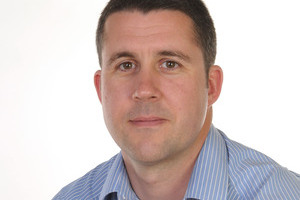Despite the technical and commercial challenges of putting ‘full fibre’ or fibre-to-the-premises (FTTP) infrastructure in place especially in countries with larger remote/rural populations the outweighing economic and social benefits are driving a significant acceleration in full fibre projects globally.
Openreach, for example, conservatively estimates that a full fibre roll out in the UK by 2025 could result in a £59 billion (€65 billion) economic boost. Report by Stuart Large, product line director & business development at Fotech Solutions.
A good example of the economic benefits of full fibre in action is CityFibre’s work in York. The deployment of a citywide full fibre network has enabled the local council to significantly improve services, while also reducing costs. These cost savings have enabled the provision of free, public Wi-Fi throughout the city. Just as importantly, the availability of reliable high-speed connectivity has secured new inward investment into the city and transformed the capabilities of the city’s businesses and residents.
A key driver for this heightened demand for full fibre rollouts is the increasing investment in ‘smart city’ projects. In February, IDC projected that global investment in smart city initiatives would reach nearly $124 billion (€104 billion) in 2020. Whilst we can expect the fallout from the COVID-19 pandemic to temper that figure, the growth trajectory over the last 10 years is still very clear.
Underpinning the data view of cities
 With current investment in smart cities focused on increasing the ‘data view’ of cities, data collection is now essential in providing municipalities with the insight needed to meet the demands of urbanisation and societal changes. The next wave of smart city development will become about using this data to create full 360º real-time visibility of all of the operations of a city. And naturally, fibre networks are already at the heart of these discussions.
With current investment in smart cities focused on increasing the ‘data view’ of cities, data collection is now essential in providing municipalities with the insight needed to meet the demands of urbanisation and societal changes. The next wave of smart city development will become about using this data to create full 360º real-time visibility of all of the operations of a city. And naturally, fibre networks are already at the heart of these discussions.
With huge investments underway to deploy a range of mobile communications technologies, GPS, edge computing and a whole host of cameras, sensors, detectors and supporting technical infrastructure a full fibre network is the glue connecting all of these new sensors and systems together.
Fibre as a sensor
However, what is very poorly understood and often overlooked today, is the idea that the fibre cables themselves can actually be used as sensors in their own right. Achieving this requires Distributed Acoustic Sensing (DAS) technology. DAS uses cutting edge photonics, advanced artificial intelligence and edge computing to convert fibre optic telecommunication cables into sophisticated acoustic sensors.
This allows DAS-enabled cable networks to detect the huge array of acoustic ‘signatures’ generated by human and vehicle activity taking place in proximity to the cable clearly identifying incidents like transport congestion, intrusion attempts around secure locations, or even more general factors like footfall in a given area.
 These capabilities allow continuous real-time monitoring of city infrastructure on a much more detailed level than is possible with other technologies today. And crucially, the level of coverage of the city infrastructure that fibre networks enable is far greater than any other technology.
These capabilities allow continuous real-time monitoring of city infrastructure on a much more detailed level than is possible with other technologies today. And crucially, the level of coverage of the city infrastructure that fibre networks enable is far greater than any other technology.
Because DAS essentially ‘plugs in’ to existing fibre optic cable networks, these benefits can be delivered at minimal incremental cost to installers. Extensive construction work, digging up the streets or installing new fixed-point sensors or cameras isn’t necessary.
Even if urban areas do need to install a brand new fibre optic network, that would be more cost-effective in the long-run as it can perform two functions at once: providing high speed connectivity and, by implementing DAS technology, capturing actionable data for smart cities.
The untapped commercial opportunity for fibre providers
The key lesson to be learned here is that we need to stop thinking about fibre only in terms of connectivity. The data derived from DAS-enabled fibre optic networks not only represents a new source of value from fibre networks it is also a new revenue stream for network owners. While you won’t find fibre-derived data revenue on any fibre provider’s balance sheet today, that will change very quickly.
There are already a number of live deployments of DAS in cities in multiple countries, and its potential will only grow as smart cities become more sophisticated. Fotech is working closely with fibre providers around the world to help them understand how DAS works and how they can optimise their networks to realise the full benefits of DAS both commercially and as a source of new data insights.
DAS offers the opportunity to enhance the economics of these roll outs, fundamentally shift the ROI calculations and ensure that additional revenue can be derived from every single metre of installed fibre.
The author is Stuart Large, product line director & business development at Fotech Solutions.
Comment on this article below or via Twitter: @VanillaPlus OR @jcvplus






